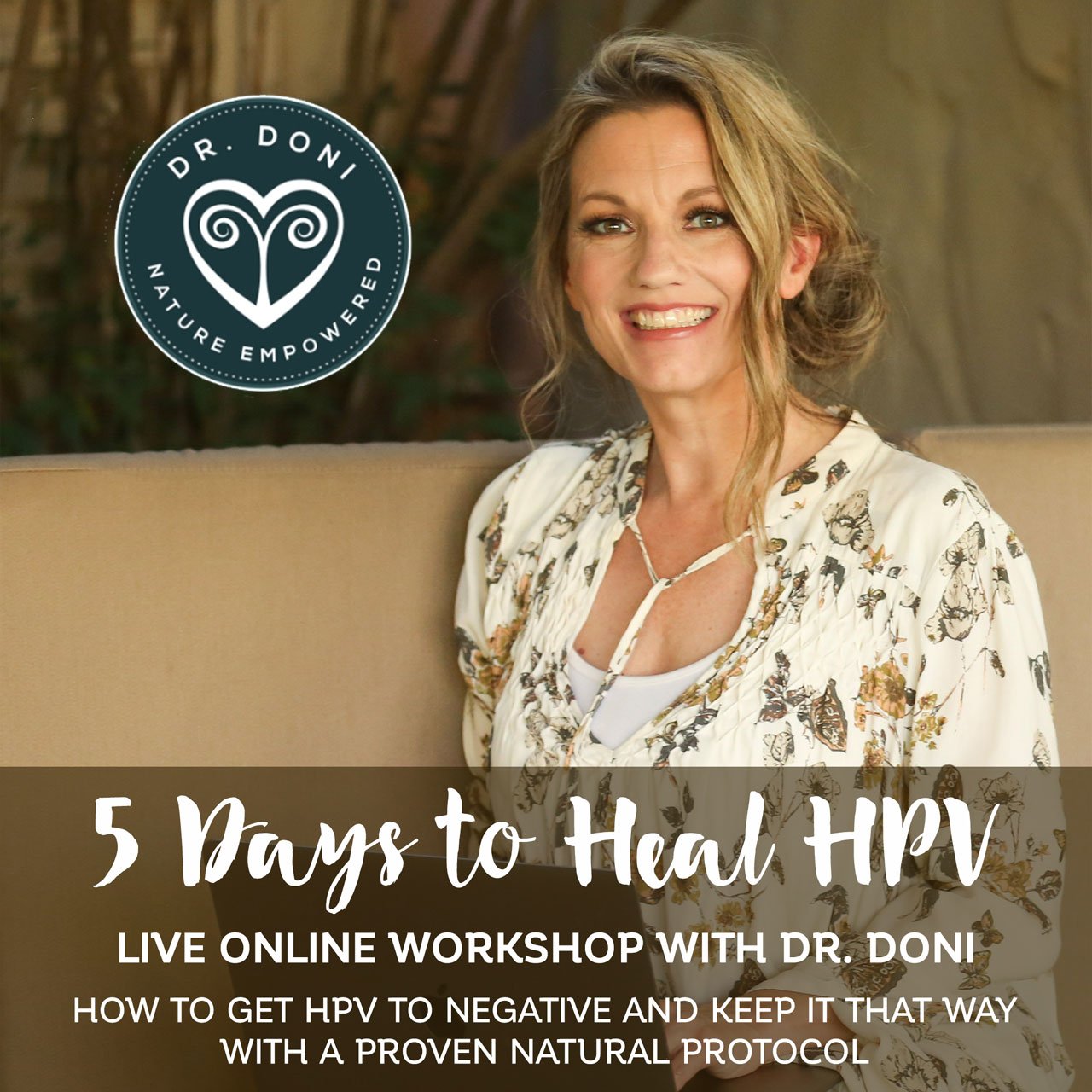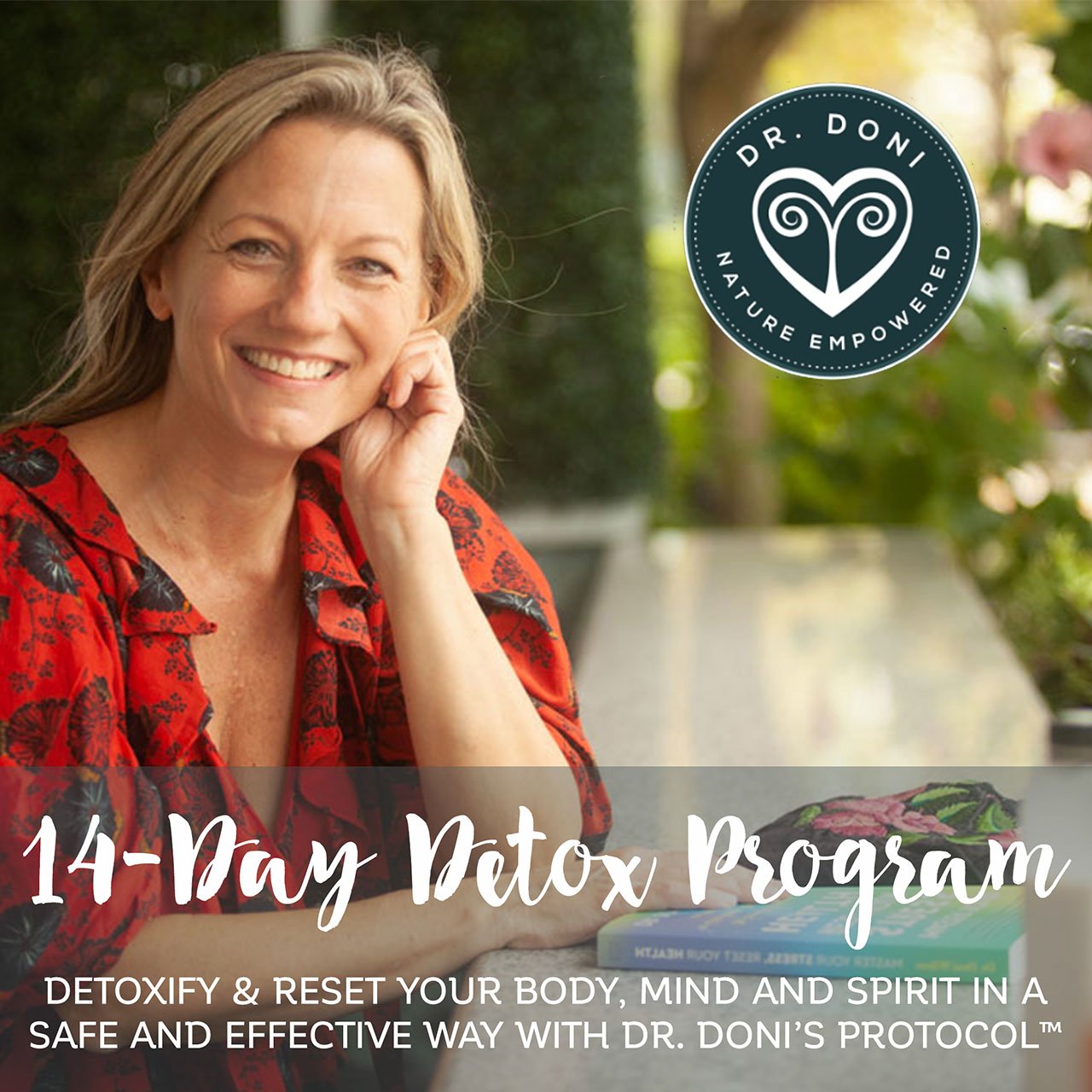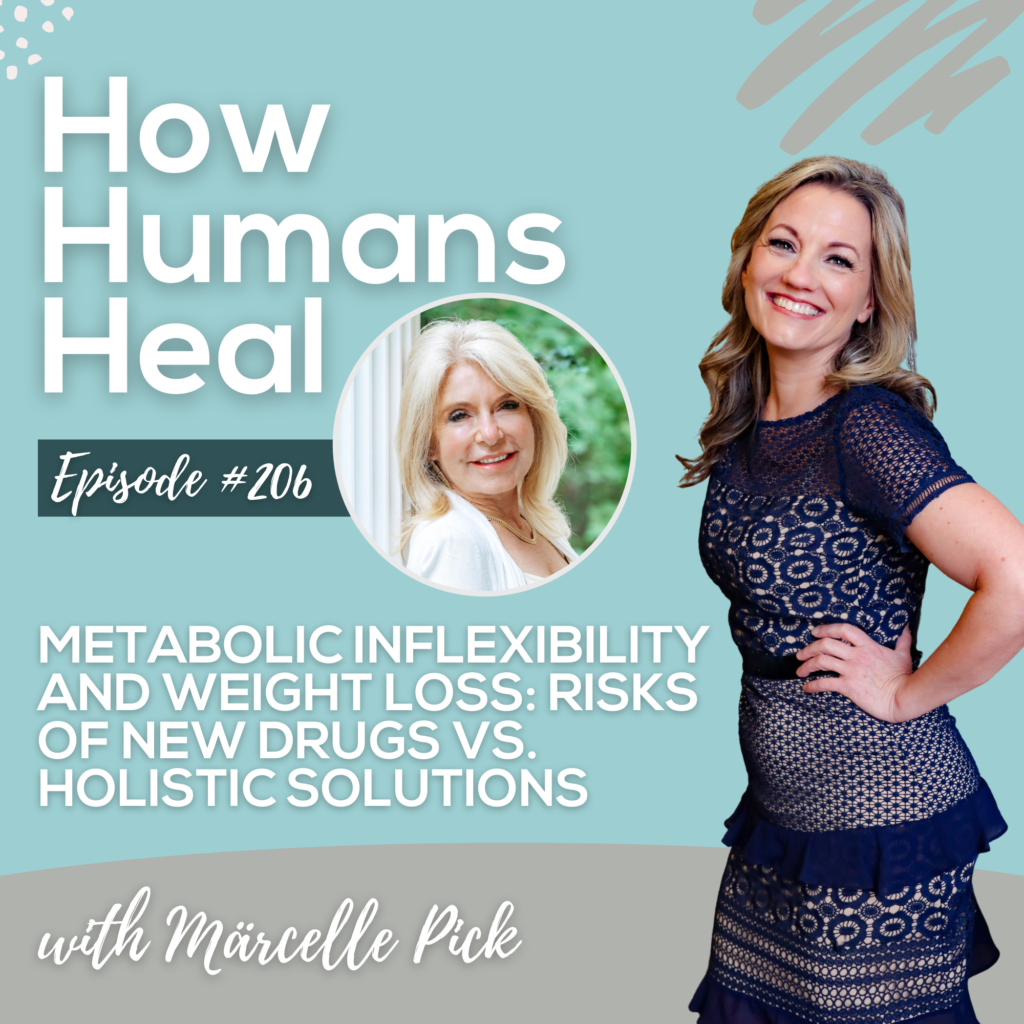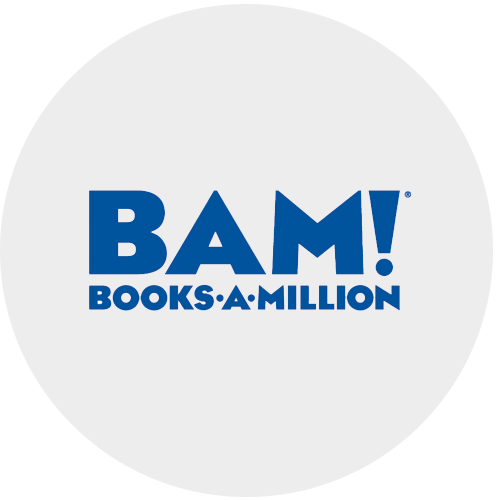

In today’s episode we’re going to be talking about the gut microbiome. Why it’s important, how to know what’s going on with your microbiome and how to optimize it.
The microbiome consists of microbes that are both helpful and potentially harmful for us and our bodies. Most of these organisms are symbiotic, meaning they and us benefit at the same time, but some are pathogenic, which are those that cause trouble, produce toxins, and increase inflammation.
When we are healthy, both symbiotic and pathogenic microorganisms coexist without problems in a perfect balance and without causing us to get sick. The problem comes when this perfect balance is disrupted, causing our metabolic and immune function to be negatively affected.
That’s why it is so important to identify and to get your microbiome back on track.
Today we will focus mainly on the gut biome, although it is now well known that it is important to have a healthy balance of microbes in all different areas of our bodies, including the skin and vagina. They all relate back to the gut, so let’s focus there.
What Is the Gut Microbiome?
I’m thinking that a lot of you probably have heard about the gut microbiome, also known as the biome or the gut microbiota. Essentially, it’s referring to the microorganisms that are living in our digestive tract.
This group of microbes living inside of us fluctuate on a daily, weekly and monthly basis based on our diet, physical activity, medications we take, toxins exposure and stress exposure.
The important thing here is to try to have a healthy balance of this microbes as much as possible. When there’s a healthy balance, the good bacteria counterbalance the potentially harmful bacteria. When our microbiome gets out of balance, it’s either that there are not enough good bacteria, or too much of the potentially harmful bacteria. And that’s when health issues start.
Research is showing that if the gut microbiome gets out of balance, it can increase the risk of many health issues including infections (bacterial, yeast, and viral), autoimmunity conditions, metabolic disorders, even weight gain, anxiety, depression, menstrual irregularities, PCOS, endometriosis, fertility issues, osteoporosis, kidney diseases, heart disease, diabetes, and dementia.
Having a healthy balance of microbes in the gut is essential for our health.
What Is this Gut Microbiome Doing for Us?
As you might suspect from the various health issues that I just mentioned, the microbiome communicates and supports our immune system and help protect us from infections and autoimmunity (which is when our immune system gets confused and starts trying to protect us from our own self) so, by having a good balance of microbes in your gut, you’re helping your immune system stay on track and protect you.
These microbes also communicate with our nervous system via the Vagus nerve and other mechanisms. These guys are sending messages to our brain and our nervous system, they’re communicating about what’s happening down in our gut, they can cause us to crave some kinds of foods in order to feed them. They can affect our mood, our memory and our focus.
They also make certain nutrients like B vitamins (including activating B12), vitamin K and short chain fatty acids (which are protective to the colon). Furthermore, they participate in making neurotransmitters such as GABA and can influence the production of serotonin and dopamine in our nervous system. What we’re learning from research is that they help us recover from stress and toxin exposure!
As you know I specialize in how humans are affected by stress and what we can do to recover from stress, and so I would say that optimizing the microbiome has a huge impact on our stress recovery.
How Do We Maintain a Healthy Microbiome?
So, we now know they’re important, but how do we take care of them? It’s like having a pet, you must know how to feed them and how to take care of them so that they can be healthy.
What we eat is what feeds our gut bacteria. Of course, they’re living in our gut so what we swallow is going to influence them and what’s going to feed them potentially. Our gut bacteria can ferment foods what we as humans are unable to digest, like fiber or complex starches for example. They can ferment fruits, vegetables, grains, nuts, seeds.
Foods and fibers that feed our microbiome are called “prebiotics.”
Fructooligosaccharides in garlic, onions, leeks, asparagus, artichokes, kale, dandelion, as well as bananas, contain the highest amount of prebiotics, or super food, for our gut bacteria.
It’s important to know that it’s possible to over feed your gut bacteria!
In fact, I would say that it is much more likely to overfeed your bacteria than to underfeed them. I see a higher percentage of patients with overgrowing bacteria rather than with too few bacteria. Going back to the pet analogy, we have to know how to feed our gut bacteria correctly.
Symptoms of overfeeding your gut bacteria include bloating, gas, cramping, bowel changes, weight gain, and burping. Consuming prebiotics in excess or eating too much fermented foods (yoghurt, sauerkraut, kimchi, miso, kombucha, etc.) can cause overgrowth.
We want that optimal amount and balance of good and bad gut bacteria, so just be aware and cautious and listen to your body. If you are consuming a lot of prebiotics, high fiber foods, fermented foods and you start to feel bloated or have bowel changes or gas, or even if you have infections (sinus, bladder, vaginal) or joint pain, inflammation, headaches, skin rashes, these are all symptoms that you may be overfeeding your gut bacteria.
How Can You Know if You’re Overfeeding Your Gut Microbiome?
What you can do is a stool analysis. For many years we have had stool cultures. The culture is when you send in a stool sample into the lab and they allow it to grow over several days. The problem with cultures is that some bacteria are anaerobic, so they don’t grow in a lab environment.
Then, about a decade ago, they came out with a DNA analysis of the gut bacteria. This is DNA sequencing so no matter whether the bacteria are alive or not, they can identify them based on their DNA. This is a much more accurate way of knowing which bacteria are thriving, or overgrowing, in your microbiome.
There are now consumer versions of these stool tests that you can order online and send in your stool sample. They may make suggestions in terms of how to change your diet to feed the bacteria that are too low, and not overfeed those that are too high.
It’s important to consider that, while making certain diet changes can help, I have not found that decreasing or increasing specific foods is an effective solution to adjust your microbiome (and I have tried it with hundreds of patients). That is because many of the same foods that feed the good bacteria, also feed the bad bacteria. It doesn’t work to manipulate your diet, in terms of eating specific fruits or seeds, in order to make minor adjustments in your biome.
A much better approach is to choose a variety of foods in your diet.
If you’re eating the exact same foods every day, it is more likely to cause an overgrown of bacteria (or yeast). In that case, increasing the variety in your diet and eating other kinds of fruits, vegetables, nuts and seeds each day, or alternating through the week, will help to improve the diversity of bacteria because you’ll be feeding a greater number of types overall.
When it comes to our gut microbiome, we want diversity. There are over 1,000 bacterial species that have been identified with about 160 species being found living in the gut of any individual so we don’t want to just feed certain ones.
Now, if your gut microbiome is really needing more help and you have symptoms of overgrowing bacteria, or a health issue related to the gut biome, then some additional steps need to be taken. There is a clinical stool panel called the GI MAP that I find has helped so many of my patients by showing exactly which bacteria, yeast, protozoa and/or parasites are present, so we can tailor a specific protocol to address them.
I can order this test through my office for you and then we can see who’s living there in your gut. It will also tell us if there is inflammation (calprotectin) or antigliadin antibodies, and how well are you digesting your food. We can see quite a lot about your digestive system in this type of clinical stool panel, and from there I can get way more specific and design a strategy for you so we can get your biome back on track.
What Can We Do to Rebalance Our Gut Bacteria?
When we’re constantly under stress, we don’t digest our food well, and this will cause an imbalance in the gut bacteria, let alone many potential health issues. If our food is not digested well, we’re not going to be able to absorb the nutrients, so it’s not going to feed us, and instead it’s going to overfeed the bacteria and other microbes.
So, how do we support our digestion? Well, we can start by taking the time to slow down and consciously eat. Take your time and sit down, breathe, chew well, etc. This way you are sending signals to your Vagus nerve communicating that it’s time to make enzymes and digest.
You can also take pancreatic enzymes if needed to help you digest food while your system is healing. This is something that will show on the stool panel. Also, if you’re not making enough bile, we can support bile production for fat digestion. If you’re not making enough stomach acid (hydrochloric acid) we can add that to help with protein digestion. We can support the digestion of your food in many different ways, including herbs that stimulate digestion or even just eating plants that are bitter (like arugula), which help with digestion.
If there’s overgrowing pathogenic bacteria, referred to as “dysbiosis,” I would guide you through a protocol of using antimicrobial herbs that are effective at addressing the bacteria that are overgrowing, without wiping out all your good bacteria. That’s a very specific protocol that I developed and tested over the years and one that works for the majority of patients.
In addition to antimicrobial herbs, I also recommend using probiotics that contain the bacillus species (such as Megaspore), which I consider to be the traffic directors of the microbiome. These bacteria are able to rebalance your gut biome by supporting the good guys and telling the overgrowing or pathogenic bacteria that they need to go.
Once we get the balance back then we can shift our strategy to maintaining the balance by eating a healthy, balanced, and diverse diet, along with potentially using a maintenance probiotic, which is going to contain lactobacillus and bifidobacterium in the range of 25 to 50 billion per day.
It’s important to consider that when trying to rebalance your gut microbiome, it’s better to do it slowly. An aggressive change can cause the pathogenic bacteria to release toxins as a defense mechanism, and this can make you feel worse. Starting with very low doses of bacillus and antimicrobial herbs and listening to your body in the process is key to a good outcome.
It’s also important to think about the environment. If there’s leaky gut, unhealthy cells, and inflammation, then the good bacteria will not thrive, so we need to be paying attention to making it a happy, healthy environment for the healthy bacteria and microbes to live in.
What Are the Causes of a Disruption in the Microbiome?
One of the main causes of dysbiosis, and one that I have been helping a lot of patients with through the years, is leaky gut. With leaky gut, the foods we eat “leak” through the intestinal lining because the intestinal cells have become damaged and there is more space between the cells.
When undigested food leaks through the intestinal lining, the immune system responds in an effort to protect us, which leads to inflammation that can spread throughout the body. At the same time, the intestinal cells are not able to absorb nutrients from the foods we eat and, of course, our microbiome is disrupted.
A poor diet, overconsumption of alcohol, smoking, stress and exposure to environmental toxins are all factors in developing leaky gut. The best protection is a healthful diet high in natural fiber and low in added sugars and processed foods.
Another cause of dysbiosis is taking some types of medications like antibiotics, antacid medications, such as proton pump inhibitors, and many other medications. These meds will kill both good and bad bacteria, so we need to counteract this effect by taking the right probiotics. This is also why it is important to avoid the use of medications whenever possible.
Stress is a major factor in the disruption of our microbiome. Stress includes psycho-emotional stress, trauma, as well as physical stressed and injuries. If you know you’ve been under stress, you’re going to want to be proactive to help your microbiome to recover.
We also know that gluten (in wheat, rye, barley, and spelt) disrupts the bacteria and decreases the levels of various kinds of healthy bacteria. If you’re consuming gluten, and even if you don’t have gluten sensitivity or celiac disease, there’s a chance you’re disrupting your gut bacteria.
Also sugar, refined carbs, processed foods, non-organic foods, a low-fiber diet, pesticides, artificial sweeteners, artificial flavors and colors added to foods, all cause gut biome disruption.
Exposure to toxins, such as toxins in our environment, our food, water, air, and exposure to mold toxins (such as if you’re living in a water damaged building), all affect our digestion and they affect our microbiome.
When it comes down to it, our gut biome is potentially being disrupted every day. It’s by raising our awareness, and being mindful about what we eat, and how we recover from stress, that we are able to keep our gut microbiome optimized.
What Are Some Products Out There That Can Help Rebalance the Microbiome?
There is another new stool panel that not only tells us about the balance of bacteria in your biome, but then also offer custom probiotic formulations based on your results. So if you’re low in certain strains of bacteria, then that’s what they’re going to put in your individualized probiotics. That company is called Flore and I can help you with that through my office if you’re interested in trying that out as a way to re-optimize your gut biome.
There’s recent research that’s identifying individual strains of bacteria and how they specifically help us with our health. I think we’re going to see more and more products, such as supplements or beverage products, that contain these specific bacteria based on research that shows how they’re potentially beneficial for our health.
For example, there’s one type of bacteria called Bifidobacterium 1741, which is considered a “psychobiotic” because it’s been shown in research to help with stress recovery, specifically to bring cortisol down. So, in terms of the Stress Types I identified, this would be especially helpful for a Stress Magnet, or Night Owl, or Sluggish and Stressed type, who have elevated cortisol levels. If you want to find out your Stress Type, you can do my free online Stress Type Quiz here.
Bifidobacterium 1741 has also been shown to help with mental health in terms of cognition, focus and memory. This type of bacteria can be found in products like Zenbiome – Zenbiome Cope and Zenbiome Sleep.
There’s also Bifidobacterium 35642 which has been shown to modulate inflammation. This would be especially helpful for someone who is experiencing a lot of inflammation and pain. Zenbiome Dual contains both Bifidobacterium 1741 and 35642.
There’s also quite a lot of research on the bacteria related to the vaginal biome and how it is completely related to the health of the gut biome. This is so important because if you’re having vaginal symptoms or recurrent vaginal infections, like yeast, BV, or HPV, we know it is important that we heal your gut biome in order to help heal the vaginal biome and prevent those infections from happening.
If you want to learn more about the vaginal biome related to the gut biome you can watch Episode #168 of How Humans Heal here. If you’re interested in a probiotic that is specifically formulated to support a healthy vulvovaginal microbiota you can find one here. And another one here.
More examples of specific oral probiotics to benefit areas of the body and for certain purposes are:
* Bifidobacterium HU36 – shown to help with carotenoid and the skin.
* Lactobacillus rhamnosus DR7, which has been shown especially to be helpful for mood and stress recovery or bacteria that has been shown to help with our neurotransmitters like serotonin and dopamine.
*Bifidobacterium BPL1 which has been shown to help with weight gain around the waist.
One more approach that is being used, especially in cases where there is the need to control an infection called Clostridium difficile, or C. diff (which is a pathogenic bacteria that a lot of times is hard to treat and get rid of) is something called a “fecal transplant.”
A fecal transplant is a procedure to collect feces from a healthy donor and introduce them into a patient’s gastrointestinal tract. Research shows that a fecal transplant can restore healthy bacteria in the lower intestine, which can help control C. diff and keep it from coming back. In some cases this can be more effective than antibiotics for keeping C. diff in check.
Still, even after using a specific probiotic, or having a fecal transplant, we will need to come back to rebalancing and maintaining the overall population and diversity of bacteria based on what we eat and supporting healthy digestion.
How to Integrate Microbiome Optimization into Your Overall Health Plan?
No matter what, I think it’s important to keep in mind that we need to take into account all of the root causes of our health issues.
Yes, we can take a bacteria-containing supplement, and we can learn to consume an optimal amount of prebiotics to feed our biome, and all that can help, but we also need to work on our recovery from stress and anything else that was thrown out of balance by stress.
We need to ensure optimal cortisol levels because cortisol determines the signals to our digestion. We need to optimize hormone levels such as insulin and blood sugar levels, thyroid, as well as leptin and the sex hormones. We need to address nutrient deficiencies and toxins.
We have to address all the underlying causes to really shift the imbalances permanently and achieve our best health and resilience to stress going forward.
If you really want to heal there needs to be a whole protocol put into action for your specific body. This is why I encourage you to refer to my overall stress recovery protocol because I’m addressing all the potential imbalances, not just the microbiome. Yes, the microbiome is hugely important, but we have to also think about all the other potential imbalances along with it because then everything can help maintain resilience together.
So, as you can see, there are many solutions – many ways to help you rebalance your microbiome. I’ve worked with some of the most challenging and complex cases – people who were put on the most strict diets and worked with many other practitioners – and I’ve helped guide them back out of it to heal their digestion, optimize their biome and help them feel better. That’s where I get my confidence to say it’s possible to get your microbiome back on track again.
If you want to work on your gut health and microbiome you may want to sign up for my Heal Leaky Gut Program where I teach you how to heal leaky gut with my proven protocol. Keep in mind that 50% of people with leaky gut, have zero symptoms, so the only way to know for sure is to do the food sensitivity panel I recommend.
If you’re interested in learning more about my approach to healing HPV you can find my new HPV Recovery Guide here. If you are tired of this virus and are really committed to erasing it from your life forever, you can sign up for my Say Goodbye to HPV 12-Week Program here.
If you want to feel better by rebalancing your cortisol and neurotransmitters, start with this home test kit. You can also sign up for my Stress Warrior Program here.
Also, if you want to learn more about how to recover from stress so that you can get back to feeling your best, you may want to read my book Master Your Stress Reset Your Health. In the book, I also share the quiz I developed to help you identify how stress has affected you specifically by knowing your Stress Type. You can also take this Stress Type Quiz online.
For the most comprehensive support, even with the most difficult health issues (physical or mental), it is best to meet with me one-on-one, which is available to you no matter where you are in the world (via phone or zoom). You can set up a one-on-one appointment with me here.
We’re here to help you!

Connect with Dr. Doni:
- Facebook https://facebook.com/drdoniwilson
- Instagram https://instagram.com/drdoniwilson
- YouTube https://youtube.com/DoniWilsonND
- Newsletter: https://doctordoni.com/www (Weekly Wellness Wisdom)
- Podcast: https://doctordoni.com/podcast (How Humans Heal)
More Resources from Dr. Doni:
- Stress Type Quiz: Assess your adrenal function
https://doctordoni.com/quiz - Dr. Doni’s Book: Master Your Stress, Reset Your Health
https://doctordoni.com/book - Dr. Doni’s Facebook Group: Stress Warrior Stress Resiliency
https://facebook.com/groups/stresswarrior - HPV Recovery Guide (FREE)
https://doctordoni.com/ddpp/hpv-guide/ - FREE Masterclasses with Dr. Doni
https://doctordoni.com/masterclasses - FREE Guides from Dr. Doni
https://doctordoni.com/guides
Personalized Solutions:
- 14-Day Detox Program: You can start this transformation program anytime
https://doctordoni.com/detox-program - Say Goodbye to HPV (12-week Program): Begin the journey to freedom from HPV today!
https://doctordoni.com/hpv-12-week - If you’d like to meet with Dr. Doni one-on-one for your health, request a Health Breakthrough Session: https://doctordoni.com/breakthrough
Disclaimer: This specific article and all other Content, Products, and Services of this Website are NOT intended as, and must not be understood or construed as, medical care or advice, naturopathic medical care or advice, the practice of medicine, or the practice of counseling care, nor can it be understood or construed as providing any form of medical diagnosis, treatment, cure, or prevention of any disease.
References:
- Defining the Human Microbiome – PMC: https://www.ncbi.nlm.nih.gov/pmc/articles/PMC3426293/
- Lactobacillus plantarum DR7 Modulated Bowel Movement and Gut Microbiota Associated with Dopamine and Serotonin Pathways in Stressed Adults: https://www.ncbi.nlm.nih.gov/pmc/articles/PMC7370301/
- Gut microbiota functions: metabolism of nutrients and other food components: Rowland I, Gibson G, Heinken A, Scott K, Swann J, Thiele I, Tuohy K. Eur J Nutr. 2018 Feb;57(1):1-24. doi: 10.1007/s00394-017-1445-8. Epub 2017 Apr 9. PMID: 28393285; PMCID: PMC5847071.
- Bifido 1741 – psychobiotic, lowers cortisol: This psychobiotic exerts its effect by targeting the HPA axis to support healthy cortisol levels. 1714™️ may support mental health, cognitive process, neurotransmitters, and overall feeling of well-being. In a 4-week human trial, 1714™️ reduced perceived stress, improved memory performance, reduced mental fatigue, positively supported brainwave activity, and improved ability to handle occasional stress. Allen AP, Hutch W, Borre YE, Kennedy PJ, Temko A, Boylan G, Murphy E, Cryan JF, Dinan TG, Clarke G. Bifidobacterium longum 1714 as a translational psychobiotic: modulation of stress, electrophysiology and neurocognition in healthy volunteers. Transl Psychiatry. 2016 Nov 1;6(11):e939. doi: 10.1038/tp.2016.191. PMID: 27801892; PMCID: PMC5314114.
- Bifido 35642 modulate inflammation: Schiavi E, Gleinser M, Molloy E, Groeger D, Frei R, Ferstl R, Rodriguez-Perez N, Ziegler M, Grant R, Moriarty TF, Plattner S, Healy S, O’Connell Motherway M, Akdis CA, Roper J, Altmann F, van Sinderen D, O’Mahony L. The Surface-Associated Exopolysaccharide of Bifidobacterium longum 35624 Plays an Essential Role in Dampening Host Proinflammatory Responses and Repressing Local TH17 Responses. Appl Environ Microbiol. 2016 Nov 21;82(24):7185-7196. doi: 10.1128/AEM.02238-16. PMID: 27736791; PMCID: PMC5118929.
- Women’s health: L. crispatus, L. gasseri, L. iners, and L. jensenii, Chen X, Lu Y, Chen T, Li R. The Female Vaginal Microbiome in Health and Bacterial Vaginosis. Front Cell Infect Microbiol. 2021 Apr 7;11:631972. doi: 10.3389/fcimb.2021.631972. PMID: 33898328; PMCID: PMC8058480.
- Women’s: Lactobacillus acidophilus and L. rhamnosus are included as these two probiotic species produce copious amounts of hydrogen peroxide that antagonize growth of pathogens and lactic acid to restore vaginal pH to a healthy range. Lactobacillus brevis, L. plantarum, L. salivarius, L. gasseri, and L. casei, all normally found in the vaginal microflora, also produce lactic acid to help create conditions for the re-emergence and dominance of normal indigenous lactobacilli. Bifidobacterium bifidum, B. longum, and B. breve are normal constituents of the vaginal microbiota, resist colonization of the vagina by pathogens such as Escherichia coli and Candida, and promote growth of indigenous healthy lactobacilli.
- Ortho – Lactobacillus rhamnosus: GR-1 and Lactobacillus reuteri RC-14 Vujic G, Jajac Knez A, Despot Stefanovic V, Kuzmic Vrbanovic V. Efficacy of orally applied probiotic capsules for bacterial vaginosis and other vaginal infections: a double-blind, randomized, placebo-controlled study. Eur J Obstet Gynecol Reprod Biol. 2013 May;168(1):75-9. doi: 10.1016/j.ejogrb.2012.12.031. Epub 2013 Feb 7. PMID: 23395559.Lactobacillus rhamnosus GR-1 and Lactobacillus reuteri RC-14.
- Skin: B. indicus HU36 is a novel, carotenoid-producing probiotic strain. Isolated from humans, HU36 produces high levels of carotenoids at the site of absorption.
- Mood Lacto rhamnosis DR7: The changes of gut microbiota along different taxonomic levels were consistent with several gene expressions of key enzymes involved along the neurotransmitter pathways of serotonin and dopamine. Anxiolytic and antidepressant-like behaviors were observed in mice administered with Lactobacillus rhamnosus while exaggerated hypothalamic–pituitary–adrenal stress response in germ-free mice was partially reversed upon oral consumption of Bifidobacterium infantis [5]. Although depression-like behaviors in a rat model were reversed upon administration of Bifidobacterium infantis [6], studies on the association of major depressive disorders (MDD) with gut microbiota revealed that MDD patients showed a lower abundance of gut Bifidobacterium and Lactobacillus than healthy controls [7]. https://www.ncbi.nlm.nih.gov/pmc/articles/PMC7370301/
- Fat reduction bifido BPL1: Improve central adiposity in adults. https://pubmed.ncbi.nlm.nih.gov/33066107/
Share this Post:
Dr. Doni Wilson
14 Day Detox Program
Take the Stress Type Quiz
Dr. Doni Social Media
Popular Posts

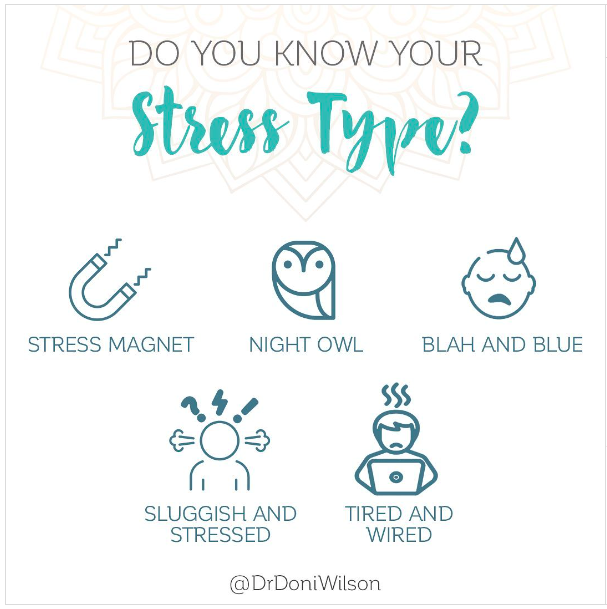
The 5 Burnout Types
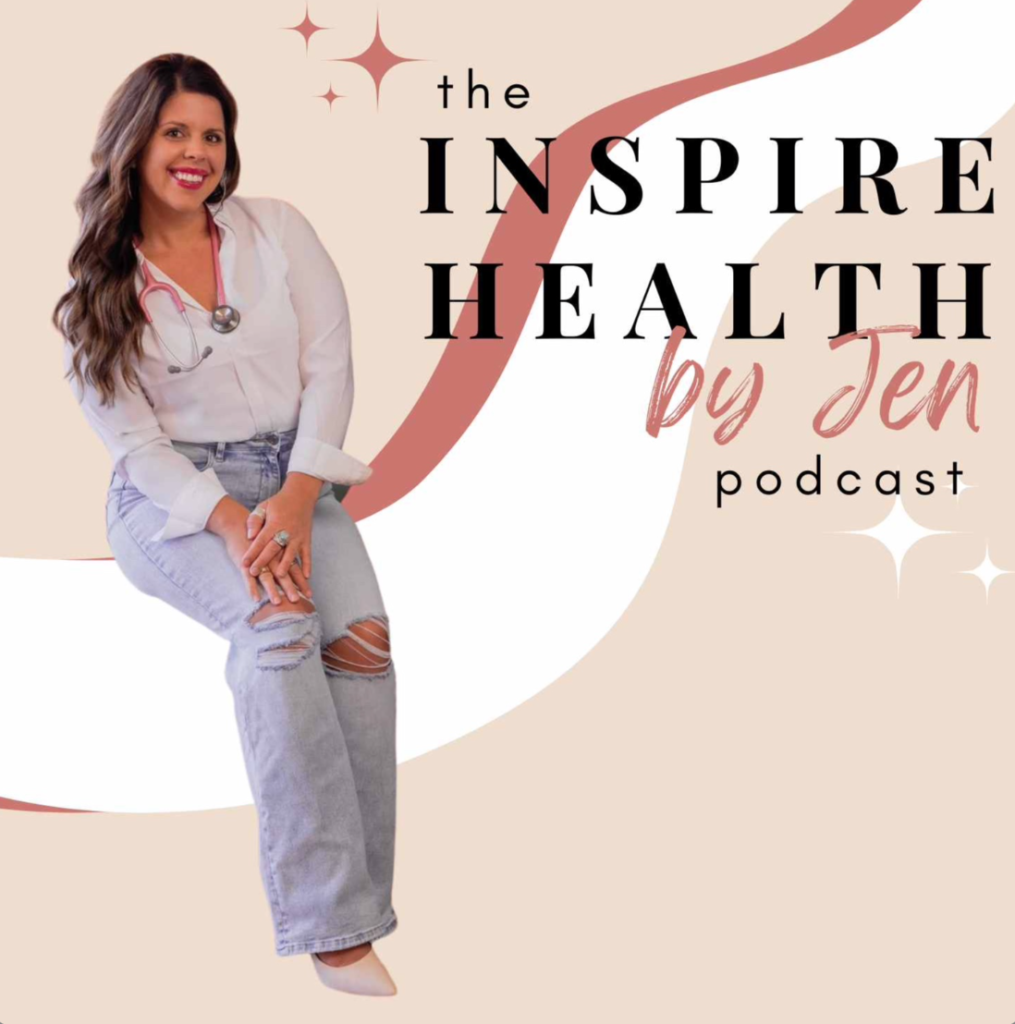
Healing HPV Holistically: Dr. Doni on the Inspire Health by Jen Podcast
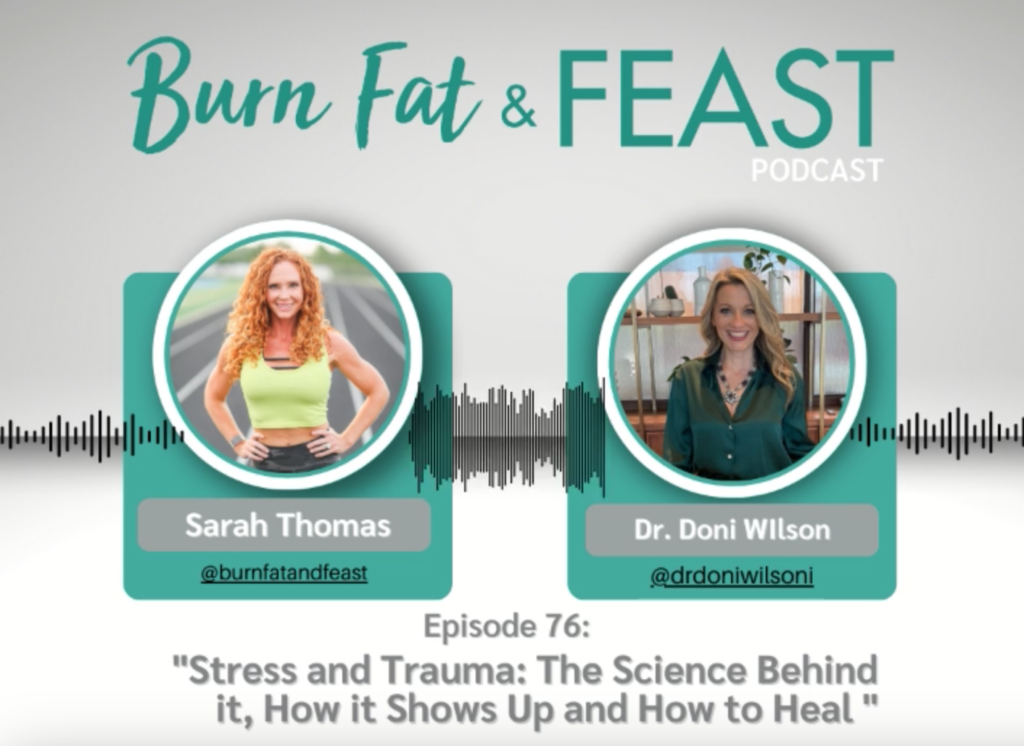
Recent Podcasts
Signup to receive our weekly newsletter with all the latest news, podcasts and special offers
New Book - Order Today!

SIMPLE PRACTICES for SHIFTING FROM YOUR STATE of STRESS to YOUR FLOW and FREEDOM
MASTER YOUR STRESS
RESET YOUR HEALTH
Order Now! Related Posts

What is making you susceptible to HPV?
I have been working with women who had abnormal cells on their cervix and/or vaginally, caused by HPV for over 20 years now. And while

The 5 Burnout Types
Did you know there are 5 burnout types? They are based on your Stress Type®, which is how your adrenal function has been affected by
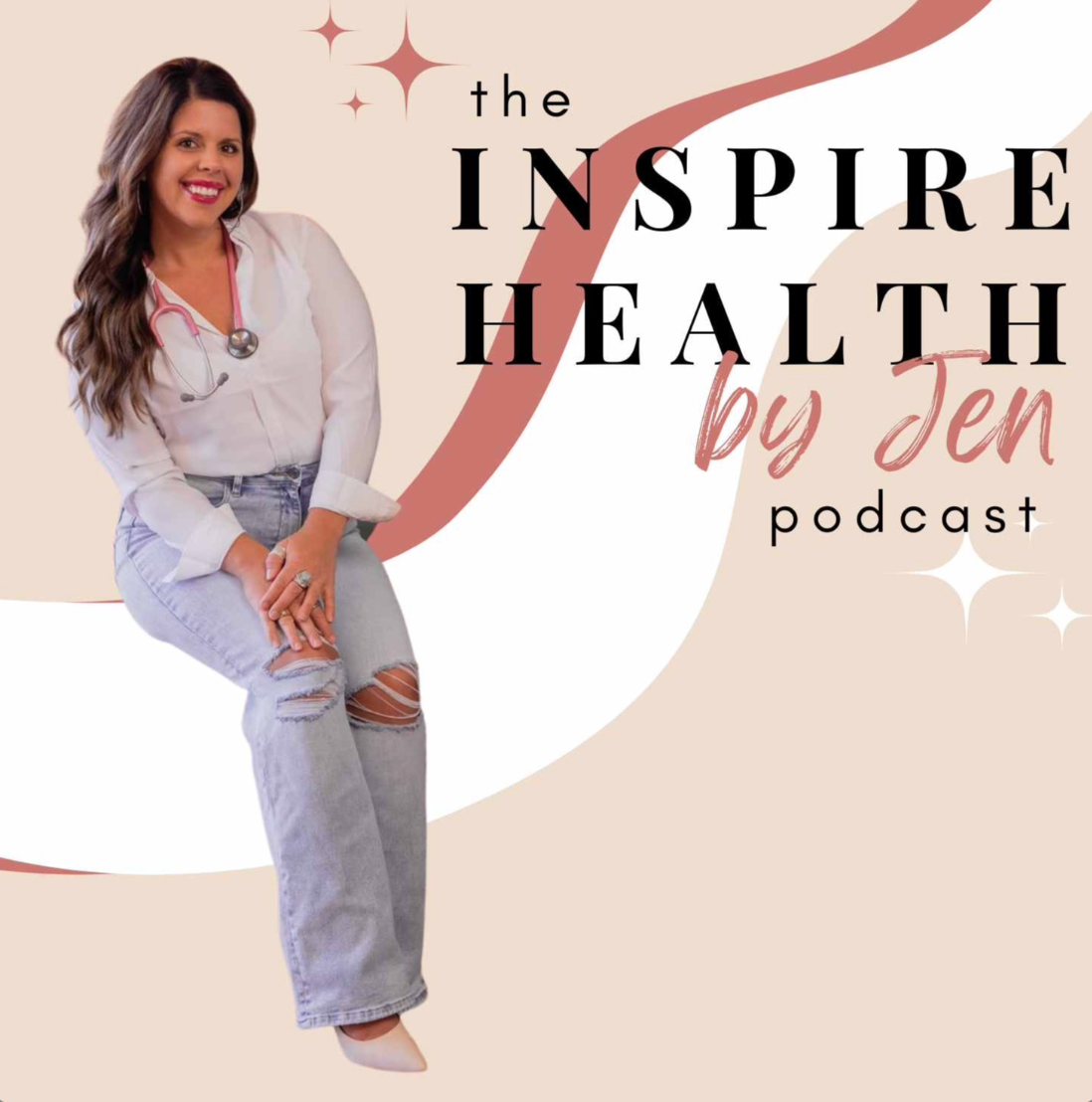
Healing HPV Holistically: Dr. Doni on the Inspire Health by Jen Podcast
Dr. Doni was interviewed by Jen Ciszewski on the Inspire Health by Jen Podcast, talking about how to heal away HPV from your body for good.
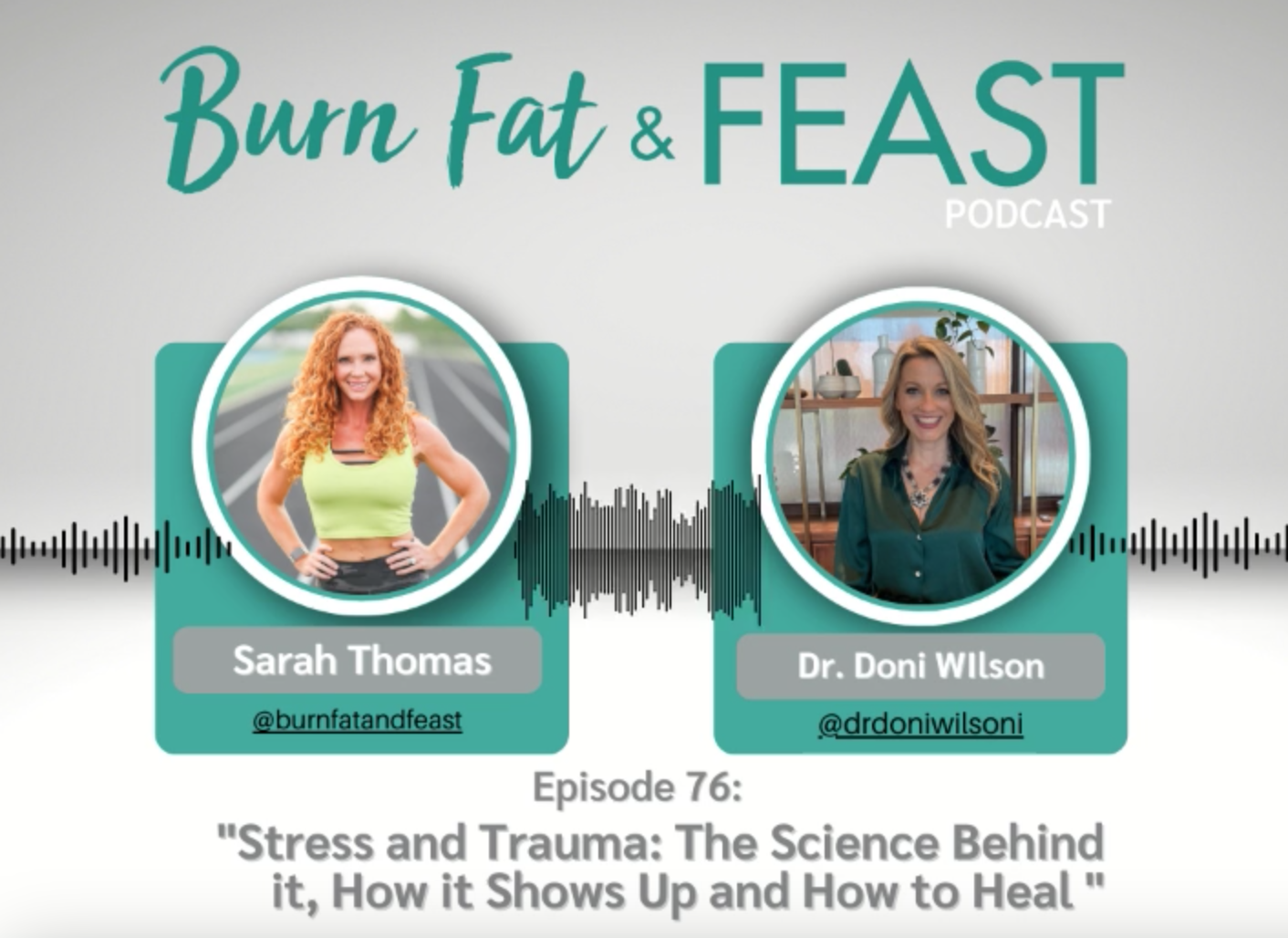
Stress and Trauma: The Science Behind It, How It Shows Up and How to Heal: Dr. Doni on The Burn Fat and FEAST Podcast
Dr. Doni was interviewed by Sarah B. Thomas on the Burn Fat and FEAST Podcast, talking about the impact of stress and trauma on our health and what to do to recover from them.


